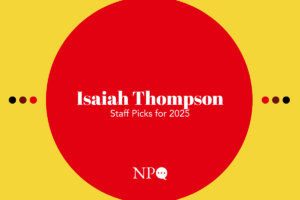September 13, 2016; Star Tribune (Minneapolis, MN)
The Star Tribune in Minneapolis features a story on nonprofit housing providers seeking to help ex-offenders navigate the travails of housing discrimination based on their criminal background. According to the article, affordable housing providers Aeon, CommonBond Communities, Beacon Interfaith Housing Collaborative, and Project for Pride in Living plan to use a $75,000 grant from NeighborWorks America to compile data to figure out the risk of renting to an ex-offender.
They hope the research will give landlords some valuable data to reshape their own tenant screening. The four nonprofits own and manage 10,000 affordable units in the metro area and western Wisconsin, and their rental policies affect tens of thousands of people.
One problem with this approach is that data-driven systems are only as good as the data that goes in, and a data screening system is still making decisions based on stereotypes. (Or, in tech speak, profiles.)
Using predictive algorithms in law enforcement has come under scrutiny lately for a couple of reasons.
Sign up for our free newsletters
Subscribe to NPQ's newsletters to have our top stories delivered directly to your inbox.
By signing up, you agree to our privacy policy and terms of use, and to receive messages from NPQ and our partners.
- Human behavior is much more complex than current predictive models. Influences may range from chemical imbalances to social upbringing to chance encounters.
- Faulty data going into the decision-making process can bias the outcome. In law enforcement models, for instance, the fact that police are more likely to stop African Americans than whites can skew the predictive validity of a system by reinforcing existing bias.
- Program designers often have no particular expertise in the field for which they are designing systems. Making decisions about how to give weight to competing values is just as subjective as “real life,” but with the aura of “science.”
In a new book, Weapons of Math Destruction, author Cathy O’Neil exposes the problem of unreliable data-driven decision-making systems. Ms. O’Neil said, in an interview about her book. “People are being labeled high risk by the models because they live in poor neighborhoods and therefore, they’re being sentenced longer….That exacerbates that cycle.”
In the Star Tribune article, Lisa Wilcox-Erhardt, CommonBond’s executive vice president of housing and services, is quoted as saying, “We are looking to screen in, as much as we can, versus screening people out.” But is that claim credible? Creating a new screening tool that’s more defensible doesn’t make it more equitable. A data profile is still a stereotype. It’s hard to see how a new stereotype will protect housing providers from a charge of discrimination. Think of discrimination as the application of a stereotype to an individual without regard to her/his individual attributes. Deciding that an applicant falls into a social profile is just one degree away from judging him/her by race, color, religion, national origin, familial status, or disability.
If nonprofit housing providers really want to “screen in” returning citizens, their data-driven systems could be used diagnostically rather than proscriptively. A well-designed admission protocol could quickly identify strengths, risks, and needs of returning citizens seeking housing. Housing providers could then build an occupancy plan based on the individual applicant’s attributes and support systems to address weaknesses and mitigate risks. For ex-offenders with backgrounds that suggest potential problems on the outside, create a checklist of supports that person will need to maintain in order to continue in occupancy. Work with civil authorities and private agencies to ensure proper levels of supervision, support for family networks, and social and medical services.
As examples, Akron Metropolitan Housing is experimenting with a “guest residency” program that permits returning citizens to move in with family members in an existing public housing unit. After an uneventful year, the guest could be added to the household lease or apply for a unit of his or her own. Other PHAs are quietly adopting programs that really “screen in” returning citizens by finding ways to meet their needs.
Unless mission-driven housing providers lead the way, it will be hard to expect private landlords to follow suit. On the other hand, having successful models for reintegration will go a long way towards destroying adverse perceptions in the minds of private-sector landlords.—Spencer Wells











